 Last month, I posted the all-grain recipe for my “other” dry stout. When I make dry stout, I usually brew my Murphy’s clone. However, occasionally I’ll brew this one, which is closer to Guinness (although not an attempt to be a clone). This is a partial mash formulation of that recipe. As partial mash recipes go, the grain to malt extract ratio is high because of its low original gravity and the fact that the pale grains are mashed and the dark grains are steeped separately. The mash actually uses a starchy adjunct — flaked barley — so you can’t do a true “extract and steeped grains” version of this.
Last month, I posted the all-grain recipe for my “other” dry stout. When I make dry stout, I usually brew my Murphy’s clone. However, occasionally I’ll brew this one, which is closer to Guinness (although not an attempt to be a clone). This is a partial mash formulation of that recipe. As partial mash recipes go, the grain to malt extract ratio is high because of its low original gravity and the fact that the pale grains are mashed and the dark grains are steeped separately. The mash actually uses a starchy adjunct — flaked barley — so you can’t do a true “extract and steeped grains” version of this.
None More Black Dry Stout (Partial Mash)
Partial Mash Option (and ESB Recipe)
 Partial mashing is a method of wort production in which the brewer produces some of his wort from a mash — as an all-grain brewer would do — but supplements it with malt extract. In practice, it is usually used in conjunction with a partial wort boil, so that it is similar to the common malt-extract-plus-steeping-grains method. For extract brewers who don’t have the space for a full all-grain set-up, or outdoor all-grain brewers who occasionally wish to come in from the heat or cold, it is method of brewing that is more flexible — and I would argue produces higher quality beer — than the normal malt-extract-plus-steeping-grains methods. [Read more…]
Partial mashing is a method of wort production in which the brewer produces some of his wort from a mash — as an all-grain brewer would do — but supplements it with malt extract. In practice, it is usually used in conjunction with a partial wort boil, so that it is similar to the common malt-extract-plus-steeping-grains method. For extract brewers who don’t have the space for a full all-grain set-up, or outdoor all-grain brewers who occasionally wish to come in from the heat or cold, it is method of brewing that is more flexible — and I would argue produces higher quality beer — than the normal malt-extract-plus-steeping-grains methods. [Read more…]
Russian Imperial Stout Recipe (Countertop Partial Mash)

The Russian T-34 tank, one of the best all-around tanks of WWII. I think they are very fun to drive (when playing Medal of Honor on my Playstation).
(Photo from Wikipedia’s T-34 page, used under Creative Commons license.)
This is a partial mash recipe for a Russian imperial stout. The recipe will work with any partial mash method, but the procedures specifically refer to countertop partial mashing.
There are several challenges to brewing a beer this big and hoppy. One of them is that there will be a lot of break material and hop debris at the bottom of the kettle. I employ a settling stage of about two hours to let the kettle debris settle and compact a bit. (If you have a way to filter the wort, this will also work.)
The classic rookie mistake when making a big beer is to pitch an inadequate amount of yeast. For this recipe, I recommend pitching two packets of dried yeast so the fermentation will start quickly and proceed without sticking. Aerating the wort thoroughly and holding the fermentation temperature steady around 68 °F (20 °C) are the other most important factors in brewing this beer.
My procedures call for collecting the wort from the mash and holding this at 150 °F (66 °C). A little less than half of the malt extract will be in the brewpot at this point. The point of this is to let the enzymes from the mash work on the carbohydrates from the malt extract. If you follow this instruction, and pitch the amount of yeast I recommend, you should get between 75 and 80% apparent attenuation. Given the OG, this will still be a full-bodied beer. However, it will not be sweet and will instead be surprisingly quaffable for a beer of it’s size.
This beer requires some aging to come into the proper condition. However, if you pitch enough yeast and run your fermentation well, you don’t need to wait forever for it to get good. Try sampling the first beers roughly two months after your brew day. You can age of your batch for extended amount of times if you’d like. However, don’t forget to drink some of it while it’s fresh and full of hop flavor and aroma. This will decline with aging.
To brew this beer, you will need a 2-gallon (~8-L) beverage cooler with the spigot on the bottom and a steeping bag large enough to line it. You will also need a second steeping bag capable of holding 3.5 lbs. (1.6 kg) of crushed grains. Follow the instructions as closely as possible, and review the general instructions for countertop partial mashing before your brew day.
T-34 Stout
Russian Imperial Stout
Partial mash; English units
DESCRIPTION
A big (9.6% ABV), roasty, hoppy stout. This ale is very flavorful and full-bodied, but attenuated enough that it is not too sweet.
Partial Mash Rauchbier
Partial mashing is a great method for making beer. The biggest benefit is that you can add the aroma of base malts to your beer. (See my article, “Why Partial Mash?” for all the benefits of partial mashing.)
One beer style that you can’t make with the usual malt-extract-and-steeping-grains method is rauchbier, or smoked beer. (The word “rauch” means smoke in German.) Although some smoked malt extract is made, it is usually hard to find. Smoked malt — also called rauchmalz — on the other hand, is not hard to find. Partial mashing is a great way for a stovetop extract brewer to brew a smoked beer, and get the wonderful flavor and aroma from smoked malt in his or her beer.
Rauchmalz is a base malt and so it must be mashed, not simpley steeped. In this recipe — that is adapted from my all-grain rauchbier recipe — the smoke flavor is fairly mellow. In my all-grain recipe, I use nearly 100% rauchmalz, and it is intensely smoky — more smoky than most people like it.
You can also ferment this beer with ale yeast to make a smoked altbier (although no such beer exists commercially). And, to change the smoke character, you can also smoke your own malt with the hardwood of your choice.
The lager version requires a fairly large yeast starter. One option is make the starter in your fermenter. Once the starter is done fermenting, pour the starter beer out and rack the fresh wort onto the yeast.
As you might expect, this beer goes great with barbecue.
Surtur’s Sword
Rauchbier (or smoked alt)
by Chris Colby
Countertop partial mash; English units
DESCRIPTION
A smoky lager that goes great with barbecue.
Stone Ruination IPA Clone (Countertop Partial Mash)
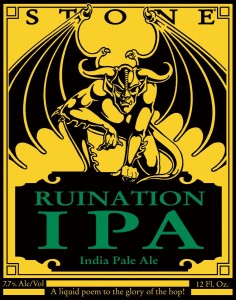 Over the past two weeks, I’ve posted several previously posted recipes reformulated as countertop partial mash recipes. These were: The Cure from Cork (dry stout), Leg of Ordinary Biters (ordinary bitter), Patrick Henry Pale Ale, Amber Socks Red Ale, Roswell IPA and Pharming Polly — a 10-gallon (38-L) stovetop recipe for a Scottish 70/- ale. Previous recipes formulated this way include: Colby House Porter, Fimbulvinter Øl (winter warmer), Beelzeboss (“witbier” brewed with Mt. Dew), and “Freya’s” Eyes (golden ale). This recipe is given for brewers using a 2-gallon (~8-L) beverage cooler as a mash/lauter tun. An option is given for mashing more grains in a 3-gallon (11-L) cooler. There’s also an option to make the double dry-hopped version of this beer.
Over the past two weeks, I’ve posted several previously posted recipes reformulated as countertop partial mash recipes. These were: The Cure from Cork (dry stout), Leg of Ordinary Biters (ordinary bitter), Patrick Henry Pale Ale, Amber Socks Red Ale, Roswell IPA and Pharming Polly — a 10-gallon (38-L) stovetop recipe for a Scottish 70/- ale. Previous recipes formulated this way include: Colby House Porter, Fimbulvinter Øl (winter warmer), Beelzeboss (“witbier” brewed with Mt. Dew), and “Freya’s” Eyes (golden ale). This recipe is given for brewers using a 2-gallon (~8-L) beverage cooler as a mash/lauter tun. An option is given for mashing more grains in a 3-gallon (11-L) cooler. There’s also an option to make the double dry-hopped version of this beer.
This is the last revamped recipe I’ll post for awhile. Going forward, I’ll post countertop partial mash versions of recipes, if people are interested.
Stone Double Ruination IPA Clone
Double IPA
Partial mash (countertop), English units
(all-grain recipe from Mitch Steele, Brewmaster, Stone Brewing Co.)
DESCRIPTION
Described by Stone as, “A liquid poem to the glory of the hop,” Ruination is big, hoppy double IPA with a huge hop aroma. Stone has also released Ruination in a few Double Dry Hopped versions.
Red Ale (Countertop Partial Mash)
Have I ever mentioned how I thought partial mashes are the way to go for stovetop extract brewers? This one has migrated from my brewing notebook to the Easy, Surefire Extract Beers series, and now I’ve reformulated it as a countertop partial mash. Both 2-gallon (~8-L) and 3-gallon (~11 L) mash tun versions are given. This amber ale is full-bodied, with plenty of caramel flavor as well as hop flavor and aroma.
Amber Socks Red Ale
Amber ale
by Chris Colby
Partial mash (countertop); English units
DESCRIPTION
An amber ale with caramel malt flavor and lots of hop flavor and aroma.
Dry Stout (Countertop Partial Mash)
This is my dry stout recipe, formulated for a countertop partial mash. (For more on dry stouts, see the series of articles on that beer style) In this formulation, the brewer mashes 4.0 lbs. (1.8 kg) of grain in a 2-gallon (~8-L) beverage cooler. An option to mash 6.0 lbs. (2.7 kg) in a 3-gallon (~11-L) cooler is also given. In the 2-gallon (~8-L) version, 78% of the fermentables come from the mash. In fact, in both version, all of the malt extract is withheld until the end of the boil.
I have been posting a series of recipes formulated as partial mashes because I feel that partial mash homebrews have more base malt aroma than recipes in which only specialty grains are steeped. If you’re an extract beer thinking of trying all-grain brewing, this is a good recipe to try as the wort is close to being made completely from grains (especially if you try the 3-gallon (11-L) cooler option).
A 1-qt. (1-L) yeast starter is recommended for this beer, but if you get a fresh tube of yeast, you can get away without making a yeast starter.
The Cure from Cork
Dry stout
by Chris Colby
Partial mash (countertop); English units
DESCRIPTION
This is a dry stout reminiscent of Murphy’s Pub Draught, now sold in widget cans. Murphy’s stout is slightly mellower — a little less bitter with a hint of chocolate and caramel in the malt — than Guinness, and (in my opinion) also tastes better when carbonated with CO2, as opposed to pushed with beer gas. If you like session ales — and are disappointed you can’t find Murphy’s except in widget cans — this is a great recipe to try.
Roswell IPA (Countertop Partial Mash)
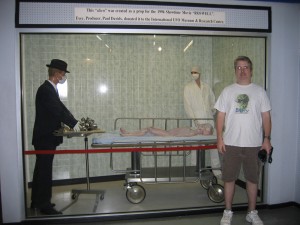
Me at the UFO Museum in Roswell, New Mexico. My wife and I visited it on the way to the NHC in Denver, Colorado a couple years ago. Keep watching the skies! (Just don’t, you know, expect little green men to fly by in a spaceship.)
Here is a countertop partial mash adaptation of my Roswell IPA, a hoppy, American-style IPA. This recipe is formulated for mashing 4.0 lbs. (1.8 kg) of grains in a 2-gallon (~8-L) beverage cooler. There is an option for mashing 6.0 lbs. (2.7 kg) of grain in a 3-gallon (11-L) cooler. Partial mashing gives your beer more base malt aroma compared to an extract-with-steeping-grains formulation. This particular method of partial mashing allows you achieve a high extract efficiency while being easy to clean up after. In addition, this recipe shows how you can raise the fermentability of extract wort by letting the enzymes from the partial mash wort work on some of the malt extract. 58% of the fermentables in this IPA come from the partial mash.
Roswell IPA
American IPA
by Chris Colby
Partial mash (countertop), English units
DESCRIPTION
A golden-colored IPA with classic floral/citrus American hops and just enough malt to keep it from being unbalanced. This beer finishes moderately dry and exhibits a wonderful hop aroma from lots of late hops and dry hops.
10-Gallon (38-L) Stovetop Scottish 70/- Ale
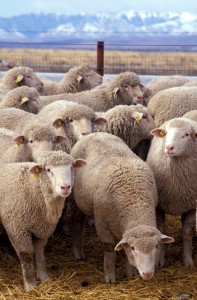 This is a recipe for making 10 gallons (38 L) of Scottish ale from 3 gallons (11 L) of wort boiled on your stovetop. I have not tried this . . . yet. But I think the idea is interesting (and sound), so I’m publishing it for brewers willing to take a bit of risk. (I think the worst that could happen is that it turns out a little darker and little less bitter than planned.) Sometime this year, I’ll give it whirl and post the results here.
This is a recipe for making 10 gallons (38 L) of Scottish ale from 3 gallons (11 L) of wort boiled on your stovetop. I have not tried this . . . yet. But I think the idea is interesting (and sound), so I’m publishing it for brewers willing to take a bit of risk. (I think the worst that could happen is that it turns out a little darker and little less bitter than planned.) Sometime this year, I’ll give it whirl and post the results here.
I chose Scottish 70/- ale because it fits the criteria for a beer made from a highly diluted wort — it’s low in gravity, low in bitterness and amber in color. In addition, some brewers of this style intentionally darken some of their wort with a hard boil. So, if this happens due to the high wort density, it won’t ruin the beer. This is formulated as a countertop partial mash, based on doubling the ingredients from my 5-gallon (19-L) extract recipe of the same beer. I did make a couple changes to the recipe. The biggest change was substituting some relatively high-alpha Challenger hops for some of the Goldings hops in the recipe, to cut down on the amount of hop debris at the bottom of the brewpot. I also dialed down the amount of Munich malt a bit.
Pharming Polly Scottish Ale
Scottish 70/- ale
by Chris Colby
Partial mash (countertop); English units
DESCRIPTION
A Scottish 70/- (seventy shilling) ale, also called a Scottish heavy ale, is — despite the “heavy” moniker — a session beer. It is heavy compared to a Scottish 60/- ale, which is a similar beer, only lower in gravity. (A Scottish wee heavy is a different style of beer altogether.) This amber beer is balanced towards the malt, but only slightly so. The clean ale strains will yield a beer that emphasizes the malt (including amber malt) and hops over yeast byproducts. It is a great beer to have if you want to have another — exactly like the one before — when you’re done.
Ordinary Bitter (Partial Mash Formulation)
Here is another example recipe using the countertop partial mashing method. This is an ordinary bitter, an English session beer, presented in a 5.0-gallon (19-L) homebrew recipe formulated for either partial mashing with a 2-gallon cooler (main recipe) or a 3-gallon cooler (see option). Compared to a bitter made with an extract-with-steeping-grains formulation, this beer has more aroma from the pale malt. Compared to some other partial mash methods, this uses more grains and less extract. Roughly 70% of the fermentables in this recipe come from the partial mash.
This original version of this recipe appeared in an article about going grain-to-glass in 7 days.

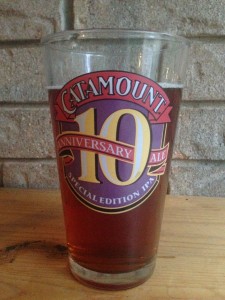

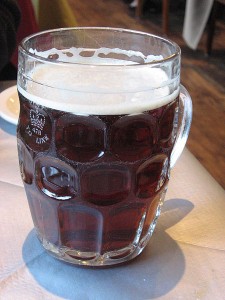

Recent Comments